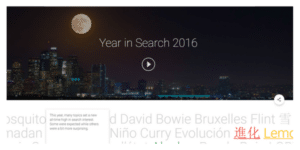TL;DR: The meta description should include meaningful keywords and accurately reflect
the page content; it should be specific and unique from the other meta descriptions on
your website; it should use complete sentences and a Call to Action; you can include
special characters to draw attention when appropriate, and aim for a maximum length of
150 characters.
Meta descriptions are one of the first impressions users get of your business when your
site appears on a search engine results page (SERP). Right under the page title, the
meta description is a brief promise of what they’ll find on your page and, therefore, why
it’s worth clicking to read.
This blog post is the second in our series about maximizing your search engine
optimization. In the first, we learned to craft page titles that get seen and grab attention,
and today we’re diving into meta descriptions so you seal the deal and get customers to
visit your site!
Why Are Meta Descriptions Important?
Much like page titles, meta descriptions need to be optimized for two key reasons:
- Search engines must understand the value of your page to show it in search
results for the right queries and audience. - Meta descriptions are your chance to persuade the audience to click on your
page before all the competition!
Google Will Rewrite Subpar Meta Descriptions
Google will sometimes rewrite meta descriptions to better match the user’s search intent.
The pitfall is that Google’s automated changes can harm your page’s click-through rate
(CTR). The CTR is the ratio of people who click on your page after seeing it, and you
can have a high CTR even without being at the top of the results page on Google. How?
By writing persuasive text—which Google can’t necessarily do in an automated rewrite!
Meta Descriptions Are Important for Social Media
The meta description is often featured when someone reshares one of your web pages
on social media. If the platform doesn’t see a meta description, it’ll grab the first text on
the page–so don’t miss this opportunity to persuade! After all, when someone loves your
page enough to share it on social media, the people who see it are personal connections
who share their values and interests. This is a precious, free way to get in front of the eyes of even more potential customers. Plus you have some built-in trust since you’re
being recommended to them by their friend!
Components of an Effective Meta Description
Now that you know meta descriptions are an opportunity for free publicity in front of an
excited audience, let’s clarify exactly how to write them for success!
Meaningful Keyword Use:
Your readers are humans, so write persuasive meta descriptions that incorporate your
top, meaningful keywords for the page into natural sentences. Be sure to use language
that your ideal customer would use. (After all, it’s a great copywriting technique because
you’re showing you understand them, and they’ll be using their own words when typing
queries into the search engine anyway, so you’ll better match!). On more than one
occasion, prospective clients of DriveTraffic have mentioned that we clearly understood
their pain points as we mention them throughout the site.
Relevance:
Building on the point above, be sure that your meta description accurately reflects the
content readers will find on your page. If it doesn’t and readers discover that when they
click on it, they’ll immediately click out again. This harms your visibility on search since
Google will interpret this high bounce rate as a sign that it’s not content worth showing.
Specific and Unique:
Do your best to make each meta description one of a kind. After all, the pages on your
website should all be unique, so make the most of it to capture the attention of potential
customers from different angles and entry points! Writing specific and unique meta
descriptions helps both Google and the searcher identify what makes your page worth
reading compared to the competition.
Complete Sentences:
A recent study showed that a good chunk of the ones where Google added content
included Google improving the grammar–simply adding a period to complete a sentence
was a differentiator in many cases. We know Google prefers complete sentences, so
write your meta description that way from the start. It’s an easy way to win!
Special Characters:
Don’t go overboard, but if you can weave a single emoji into your meta description, it
could help draw the eye of the reader to your entry on the search results page.

Call to Action:
Using a call to action is a good best practice for any writing you do in your business,
whether it’s to make a sale, drive engagement on a social post, or get someone to click
through to your webpage from Google!
Include a Call to Action in your meta description that gives your reader a single action
you want them to take, and frame it as a benefit to them. For example, at the end of your
meta description for a blog post: “Get the secrets here.” Or for a product page for
clothes: “Find your fit.” Make it one clear instruction that hints at what’s in it for them!
Ideal Length:
Depending on your platform, you might have a lot of space allotted for a meta
description. For example, Shopify provides space for 350 characters, which is way over
the top!
In reality, and from experience, we recommend an ideal maximum of 150 characters
for each meta description. If it’s valuable and persuasive, don’t worry if you go over or
under by a few characters. However, remember that sometimes Google will shorten a
meta description (even if it’s beautifully written) to better match a user’s search intent, so
try to put the most important information within the first half.
Tools to Optimize Meta Descriptions
That’s a long list of considerations for a great meta description! Never fear. As long as
you have them in the back of your mind (or bookmark this blog post for review), you can
easily use tools that make it easier to improve your current or yet-to-be-written meta
descriptions.
Tools for Writing a Meta Description for a New Page
Yoast SEO plugin: Yoast SEO is a popular WordPress plugin (there’s a free version!)
that helps you optimize your meta descriptions for search engines. It includes an
analysis feature and helps with optimizing page titles too.
BONUS TOOL: If you’re very specific about what you want, ChatGPT can take the task
of writing meta descriptions off your plate. Try copying and pasting your drafted page
content into the AI, then ask it to recommend a meta description. You can even copy
and paste these specifications into your instructions:
The meta description should reflect the content accurately, include
important information at the beginning, use complete sentences
and a call to action, and have a maximum length of 150
characters.
DON’T FORGET: AISEO is a WordPress plugin that integrates with ChatGPT to
generate SEO-friendly meta descriptions. Full disclosure– we haven’t had a chance to try
it yet!
Why You Should Optimize Your Existing Meta Descriptions
Ideally, every page on your site, from your home page to your latest blog post, should
have an optimized meta description. After all, every page and meta description is an
opportunity to get seen by your ideal customers!
However, if you’re overwhelmed by the prospect of optimizing meta descriptions for
hundreds of pages (even thousands if you have an ecommerce site), focus on your most
important pages first (like your Home page). Why? Remember, Google will, by default,
construct a meta description for your pages by grabbing what it considers a relevant
chunk of text. We discussed earlier in this blog post why that’s not ideal–but it’s certainly
better than nothing!
PSST: If you’re curious, in 2018, the SEO platform Yoast analyzed 100 of their own
webpages and found that when Google wrote (or rewrote) the meta description, 2 out of 3 times, it used sentences from the first paragraph. Hopefully, you wrote the first few
lines to grab attention for your page content in the first place!
Why You Should Optimize Your Existing Meta Descriptions
Screaming Frog: Audit your whole website’s meta descriptions with Screaming Frog.
(There’s a free version of this tool too!) First, use it to crawl your website and pull a list of
all your pages and their meta descriptions. You’ll see them all in one list, along with how
long they are and common issues. You can export the results as a CSV to make
improvements, then update your website’s meta descriptions manually or use a plugin if
you have a content management system like WordPress.
Bonus Tip: Writing Meta descriptions for Ecommerce Sites
All the basic guidelines for a strong meta description apply to your ecommerce site–plus
this bonus tip! For example, it’s a good best practice to include your top evergreen offer
on your core pages, such as:
- Free shipping.
- 30-day money-back guarantee.
- Get 10% off your first purchase!
The idea is to incentivize readers to choose your online store before all others.
Wrap-Up: Maximizing Meta Description SEO
Meta descriptions are a powerful opportunity to attract potential customers who find you
on a search engine results page.
Optimizing a meta description is just as much about persuasion as it is using best
practices to improve your visibility. Remember the essentials, like keeping your meta
descriptions unique from each other and under 150 characters, using meaningful
keywords, and giving a Call to Action. Plus, use tools like Yoast SEO, ChatGPT, and
Screaming Frog for a helping hand in reviewing and optimizing meta descriptions before
and after page publication.
Ready to learn more about optimizing on-page SEO? Read our complete guide, or go
straight to the next post in this series about page headings.






